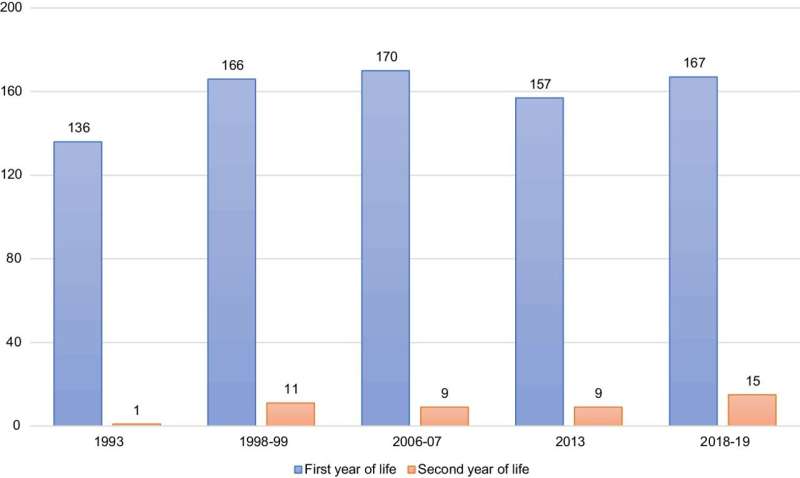Call to count breast milk in food statistics

Milk produced by breastfeeding mothers is an important indicator of a nation's food security, according to an international study led by The Australian National University (ANU).
The Australian and Norwegian based research team is calling for the inclusion of human milk production in both national and global food supply statistics.
Using the pioneering example of Norway, they found tracking human milk production levels raised awareness of the value of human milk in achieving healthy, secure and sustainable food systems.
Dr. Julie Smith from the ANU Research School of Population Health said that globally, infants and young children make up six percent of the population and consume significant amounts of breastmilk.
The Norwegian Health Directorate estimated total production of human milk for babies and toddlers in the Scandinavian country increased from 8.2 million liters per year in 1993 to 10.1 million in 2018–19.
"Adding this kind of data on baby and toddler diets gives a clearer picture of the crucial contribution of mothers to our food supply and helps build systems that offer greater support to mothers and their babies," Dr. Smith said.
Norway's statistical records meant its policy makers saw the value of investing in breastfeeding, with virtually all Norwegian mothers breastfeeding, and some five in 10 breastfeeding at 12 months.
"The Norwegian experience shows it is feasible, and useful, to include human milk production in food surveillance systems," Dr. Smith said.
"Statistics matter because they are the evidence on which policies are built.
"Norway invests in the care of infants by funding several months of parental leave paid at full salary. Mothers can take up to 31 weeks fully-paid leave, with a further quota of 15 weeks paid leave for fathers.
"Quality 'Baby Friendly Hospital' maternity care services are provided so that every baby is born in facilities meeting the WHO/UNICEF 'Ten Steps' criteria for successful breastfeeding."
Dr. Smith said Norway's key to monitoring its human milk supply is a regular and reliable breastfeeding survey.
She is calling on the new Federal Government to urgently commit funding for the Australian Bureau of Statistics to run the long overdue second Australian Infant Feeding Survey, instead of relying on outdated 2010 data.
"A five-yearly data collection and reporting system should be adopted in Australia as the first critical step to advance action on the Australian National Breastfeeding Strategy," Dr. Smith said.
"The continued invisibility of breastfeeding in food production statistics ignores the immense scale of human milk production by breastfeeding women, and the urgency of protecting and enhancing community knowledge.
"Breastfeeding is worth much more than just the amount of milk produced, but having such data in food statistics will provide a necessary foundation for food, health and economic policy and planning."
The research is published in Public Health Nutrition.
More information: Julie P Smith et al, The contribution of breastfeeding to a healthy, secure and sustainable food system for infants and young children: monitoring mothers' milk production in the food surveillance system of Norway, Public Health Nutrition (2022). DOI: 10.1017/S1368980022001495


















